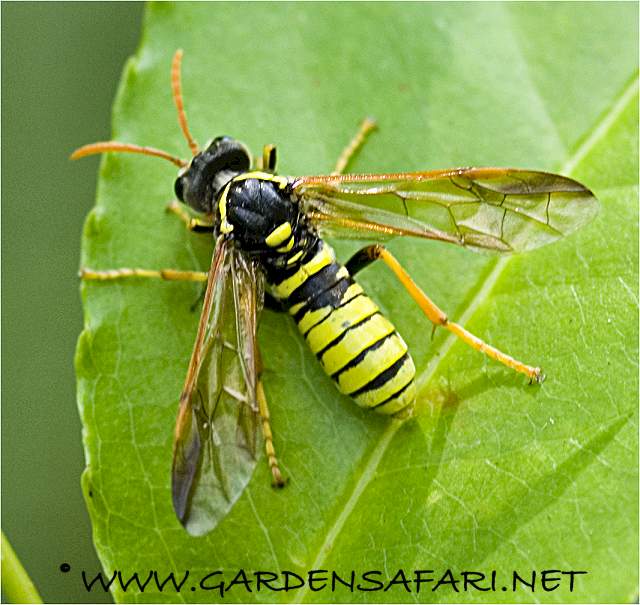Tenthredo scrophulariae
Figwort sawfly ( Tenthredo scrophulariae ) (pairing)
The figwort sawfly ( Tenthredo scrophulariae ) is a Blattwespenart.
Physique
The animals are 11 to 15 millimeters long and are colored black and yellow. The yellow- black Abdomenringelung is probably a mimicry of Real wasps ( Vespinae ), which gives the animal protection against predators.
The head is black and quite short with prominent rectangular rear corners. The scourge of the sensor is not narrowed towards the tip, it is compared to many related species quite short (less than twice as long as the head width ). It is colored orange (most similar species of the genus it is black).
The front pair of legs is almost completely yellow. Only the back of the thigh (femur) is black. The middle and rear pair of legs orange, with the thigh of the rear leg pair are completely black. In the middle pair of legs the color of the thigh varied. There are both individuals completely black thighs as well as those in which only the back of the thigh is black. The long orange hind legs hanging down in flight and give the insect as a characteristic flight pattern. The leading edge of the front wing, including the wing veins and the times is intense orange-red, the rest of the wing membrane pale yellow towards the tip gray, tinted. The wings are almost always worn spread away from the body even at rest.
The thorax is predominantly black, pronotum and scutellum are only the yellow.
The up to 30 mm long larvae of the figwort sawfly caterpillars are very similar. They have a dark head and a white body with black dots.
Ecology and life
The larvae of this species feed primarily on members of the genus Scrophularia ( figwort ), whose most important phytophagous it counts. Come alongside ago on Verbascum nigrum (black mullein ), while only the little hairy, accepting older leaves. It is also a proof of Buddleia before larvae are active from July to October, overwinter them. Imaginale wasps fly in summer ( June to August) the following year. The adult animals are often found on umbelliferous.
The larva is parasitized by the parasitic wasps species Mesoleptidea prosoleuca and Euceros serricornis
Dissemination
The species is found throughout Europe and in northern Asia Minor, east to the Caucasus. It is distributed in Germany and often.









